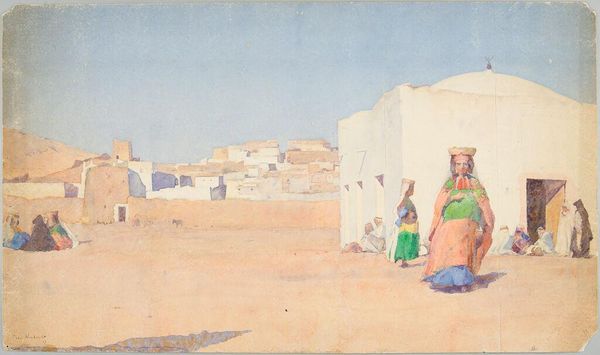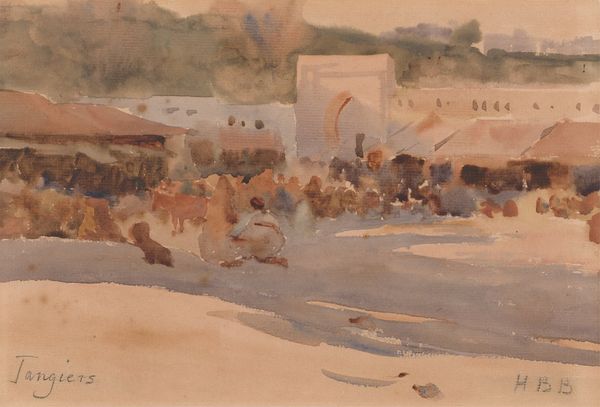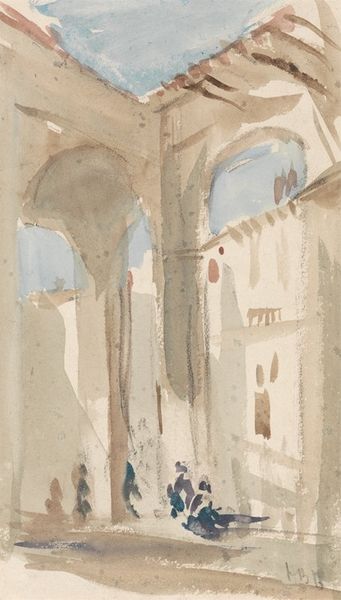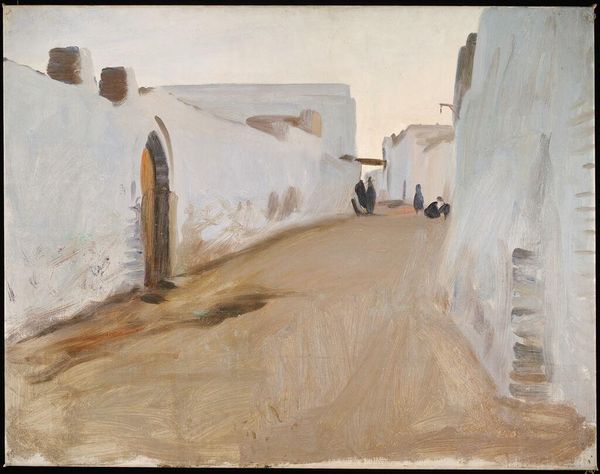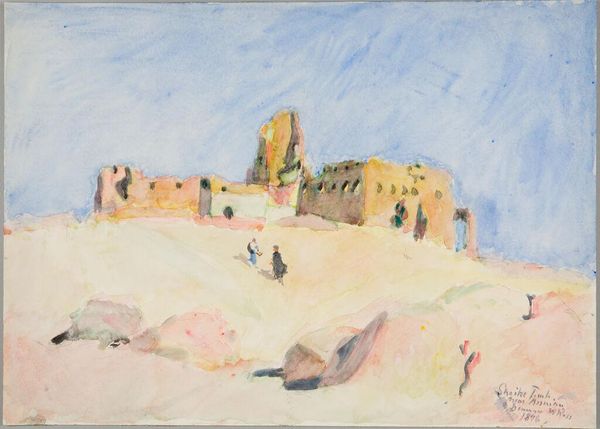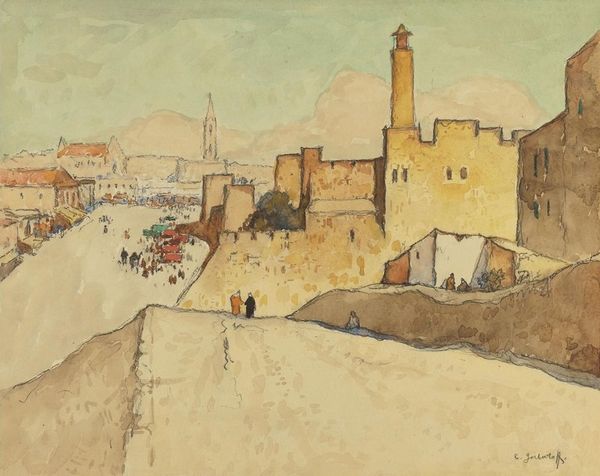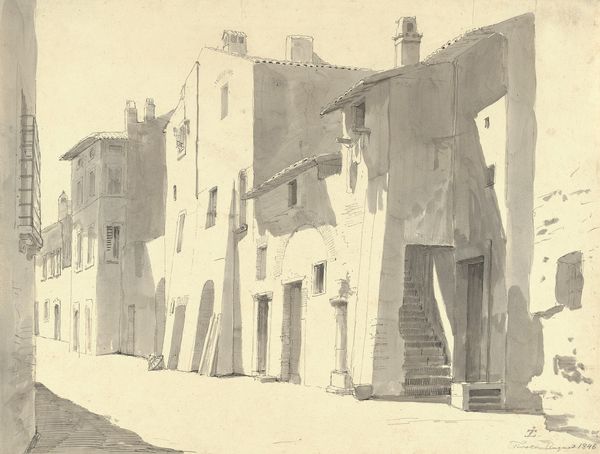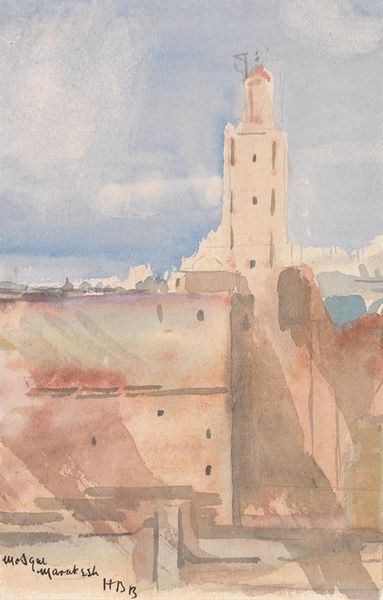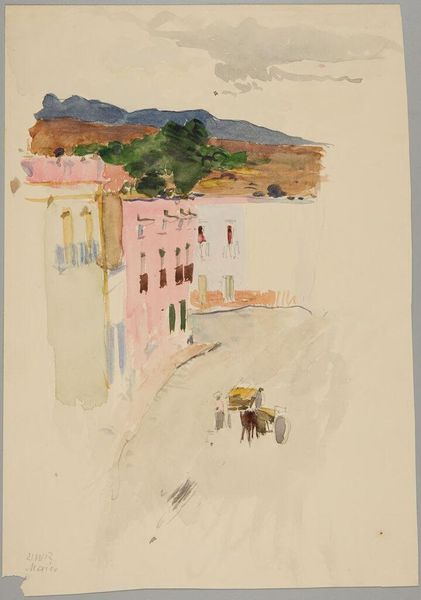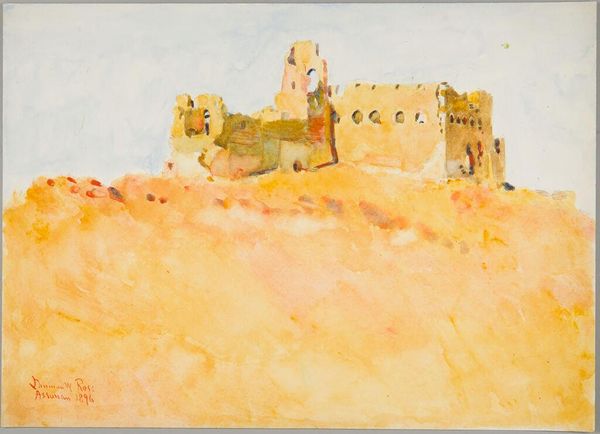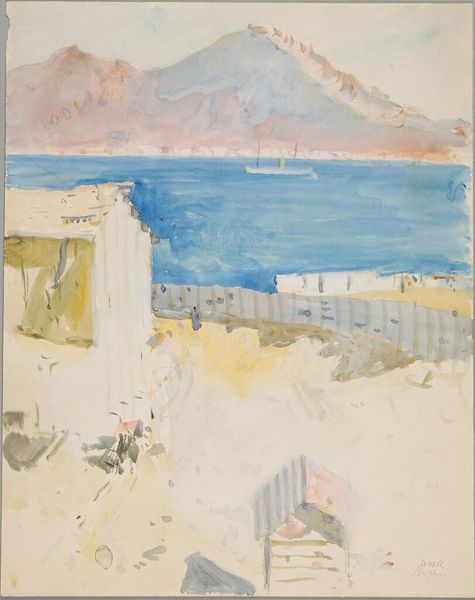
painting, watercolor
#
water colours
#
painting
#
landscape
#
watercolor
#
coloured pencil
#
orientalism
#
painting painterly
#
cityscape
Copyright: Public Domain: Artvee
Editor: Here we have Hercules Brabazon Brabazon’s watercolor, "Walls of a North African City." It evokes a real sense of place, but the sketchy style also makes it feel very immediate and personal. The high horizon line and simplified shapes give the scene a slightly dreamlike quality. How would you interpret this work, given its historical context? Curator: Given the prevalence of Orientalism at the time, it’s essential to examine how Brabazon frames this North African scene. Do you notice anything in the composition or color choices that seem to reinforce Western perspectives on the region? Editor: Well, there is a sort of distance that's created, by how the buildings dominate the scene, and the figures appear comparatively small and somewhat indistinct. Maybe that contributes? Curator: Precisely. The architecture becomes a monumental backdrop against which the figures are positioned, potentially exoticizing the inhabitants. And the limited palette, perhaps aiming for a 'dusty' feel, was a common trope. I think we also need to ask about the reception of such imagery back in Britain. Editor: How so? Curator: What effect would constant exposure to these idealized, distant views of North Africa have on the public's understanding—or misunderstanding—of those cultures? Did it inspire genuine interest or reinforce colonial power dynamics? Editor: I see what you mean. It’s easy to get lost in the aesthetic beauty of it all, but crucial to unpack those layers of representation and power. Thanks! I hadn't thought about that angle. Curator: Absolutely. Art isn't made in a vacuum, and even the most seemingly innocent landscape can carry significant cultural weight.
Comments
No comments
Be the first to comment and join the conversation on the ultimate creative platform.
